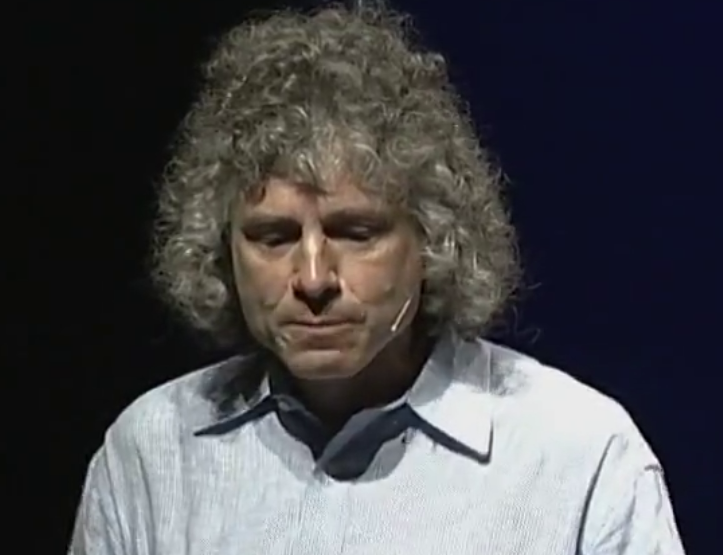(单词翻译:单击)
演讲文本
So, a problem in explaining how children learn language,
所以在解释孩子们如何学习语言时候,有一个问题
a problem in teaching language to adults so that they don't make grammatical errors,
同样也是教成人学外语语法时的一个问题
and a problem in programming computers to use language is which verbs go in which constructions.
以及给电脑编使用语言的程序时--在哪个构式里该用哪个动词?
For example, the dative construction in English.
比如,英语中的与格构式--
You can say, "Give a muffin to a mouse," the prepositional dative.
可以说“Give a muffin to a mouse”,前置词与格,
Or, "Give a mouse a muffin," the double-object dative.
或者“Give a mouse a muffin”,双宾语与格,
"Promise anything to her," "Promise her anything," and so on.
“Promise anything to her”,“Promise her anything”,等等。
Hundreds of verbs can go both ways.
上百的动词可以两用。

So a tempting generalization for a child, for an adult, for a computer
对于孩子,很容易去做的一个归纳--对于大人和电脑来说也一样--
is that any verb that can appear in the construction,
就是任何可以在下面这个构式中出现的动词
"subject-verb-thing-to-a-recipient" can also be expressed as "subject-verb-recipient-thing."
“主语-动词-物体-to-a-接受者”也可以表达成“主语-动词-接受者-东西”。
A handy thing to have, because language is infinite,
这是很顺手的事,因为语言是无穷的
and you can't just parrot back the sentences that you've heard.
对于你学过的句子不能只是鹦鹉学舌。
You've got to extract generalizations so you can produce and understand new sentences.
你必须得做出归纳,这样你才能制造、理解新句子。
This would be an example of how to do that.
这就是这样做的一个例子
Unfortunately, there appear to be idiosyncratic exceptions.
不幸的是,这方面有例外。
You can say, "Biff drove the car to Chicago," but not, "Biff drove Chicago the car."
你可以说,“Biff drove the car to Chicago”,但不是“Biff drove Chicago the car”。
You can say, "Sal gave Jason a headache," but it's a bit odd to say, "Sal gave a headache to Jason."
你可以说:“Sal gave Jason a headache”,但“Sal gave a headache to Jason”就很别扭了。
The solution is that these constructions, despite initial appearance, are not synonymous,
原因是这些构式,尽管一开始相似,但并不是同义句。
that when you crank up the microscope on human cognition, you see that there's a subtle difference in meaning between them.
当你搬出显微镜对准在人类认知上,你会看到很多微妙的差别存在于它们的意思里。
So, "give the X to the Y," that construction corresponds to the thought
所以“Give the X to the Y”--这个构式对应的想法是:
"cause X to go to Y." Whereas "give the Y the X" corresponds to the thought "cause Y to have X."
“Cause X to go to Y”,而“Give the Y the X”对应的想法是“cause Y to have X”。
视频及简介
演讲简介:
在他所著《思想的实质》的独家新书介绍会上,史蒂芬·平克探讨了语言如何表达内心的思想--以及我们的遣词用句中透露出多少鲜为人知的信息。


